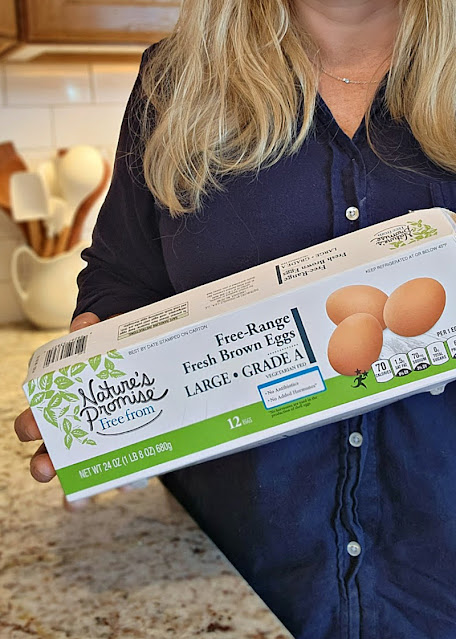The tops of egg cartons read like veritable billboards these days. Shouting things like "Free-Range", "Vegetarian", "Hormone-free" and "Farm Fresh".
Unfortunately most of these terms are misleading at best and meaningless at worst.
So I'm going to teach you how to "crack the egg carton code" and learn what Big Egg doesn't want you to know.
Most of you probably check the top of the egg carton for those key words that mean something to you, whether that be "organic" or "brown eggs" (although, spoiler alert, there's literally no difference in nutritional value between brown and white eggs).
What do the Codes on an Egg Carton Mean?
1. Pack Date on an Egg Carton
In the past, I have "cracked the code" on egg cartons, sharing how to read the 3-digit code that indicates when the eggs were put in the carton so you can tell how fresh the eggs are that you're buying.
Basically, what you're looking for is the 3- digit number on the end of each egg carton. That is the Julian date, i.e. 001 is January 1st and 365 is December 31st, and that's the date the eggs were packed in the carton.
2. Best By, Sell by, Expiration or Use By Date on an Egg Carton
Sell by Date or Expiration Date
Best by or Use by Date
In this case, you can see in the photo above that the Best by date is October 9th.
3. Egg Grade on an Egg Carton
- Grade AA | these are the freshest and highest quality eggs, with an air pocket of less than 1/8 inch and whites that are thick and firm.
- Grade A | these are the next highest-quality eggs, with reasonably firm whites.
- Grade B | these eggs are usually used for commercial baking or liquid, frozen and dried egg products.
4. Egg Size on an Egg Carton
- Peewee Eggs | an average of 1.25 ounces per egg
- Small Eggs | an average of 1.5 ounces per egg
- Medium Eggs | an average of 1.75 ounces per egg
- Large Eggs | an average of 2.0 ounces per egg
- Extra-Large Eggs | an average of 2.25 ounces per egg
- Jumbo Eggs | an average of 2.50 ounces per egg
Large eggs are what are called for in most recipes and the most common size eggs sold in grocery stores.
5. Plant Code on an Egg Carton
The last set of numbers on an egg carton refers to the plant code where the eggs were actually packed into the cartons.
The plant code is a four-digit number usually starting with the letter P. You can type the number (without the P) into this handy chart from the USDA to find out where the eggs you've bought were packed.
©2022 Fresh Eggs Daily and Updated in 2024 for Coop to Kitchen by cookbook author and certified Le Cordon Bleu recipe developer Lisa Steele. All rights reserved.











